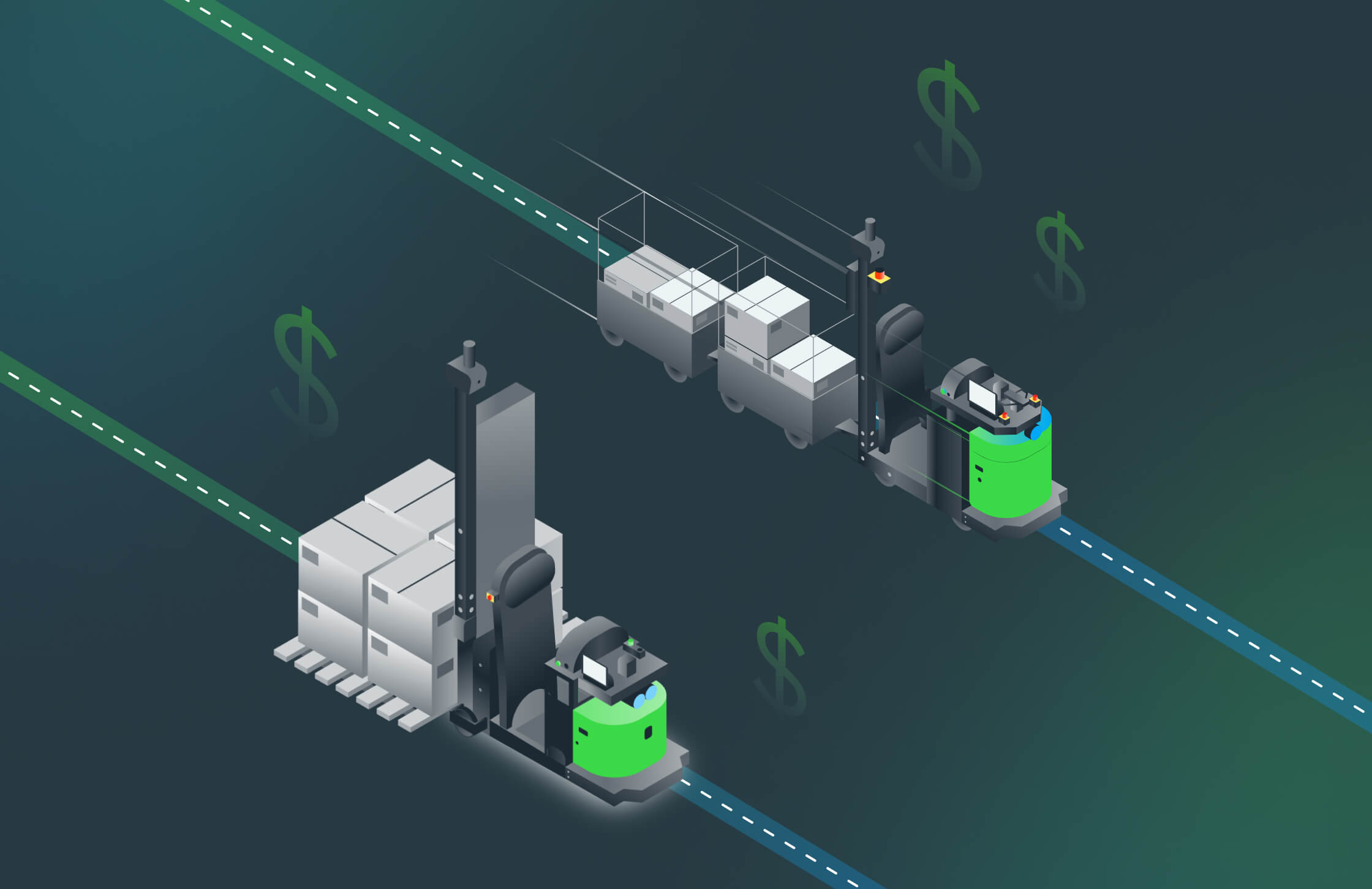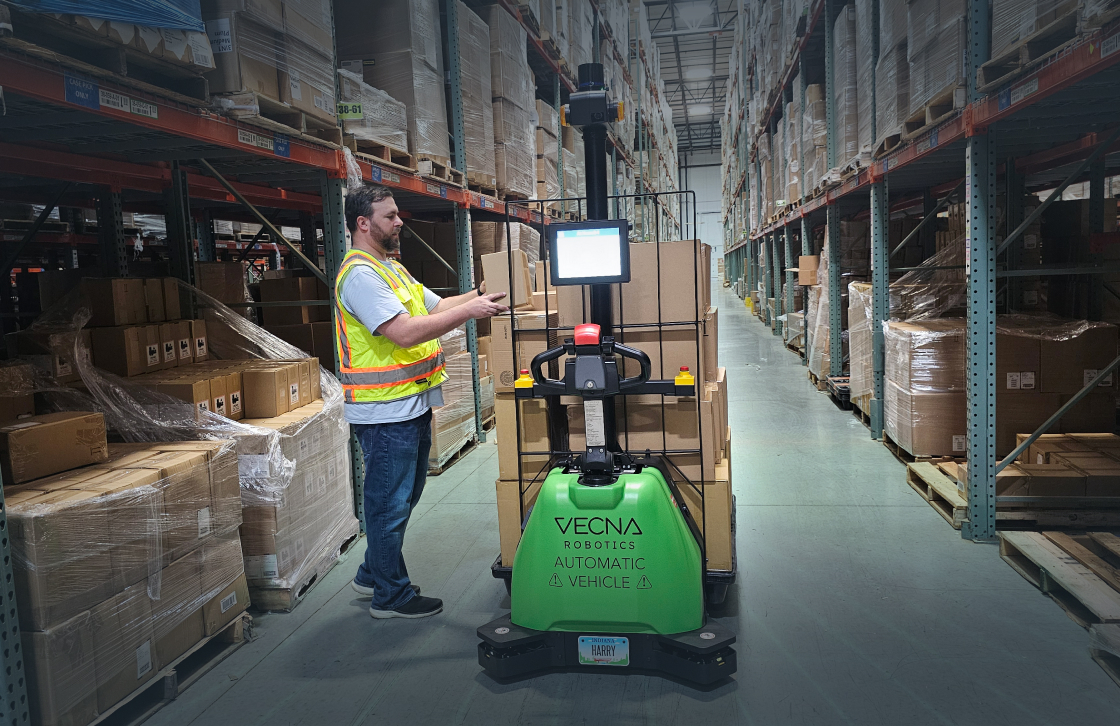Warehouse automation, once a luxury only the biggest enterprises could consider, has become an accessible and essential tool for businesses of all sizes striving for efficiency in an increasingly competitive marketplace. With the rapid advancement of technology, not only have we seen an increase in the variety of automation solutions available but also a broad spectrum of financial investments required for implementation. These range from simple automated guided vehicles (AGVs) to intricate, interconnected robotic systems that can transform an entire warehouse’s operation.
Moreover, the decision to automate is not solely driven by the desire for efficiency but also by external pressures such as consumer demand for faster delivery times, a heightened emphasis on accuracy, and the ongoing challenges of maintaining a skilled workforce in a tight labor market. Warehouse automation, in this context, is not just about machinery and technology; it’s about strategically positioning a business for future growth.
But delving into the realm of automation brings forth the vital query: how much does warehouse automation cost? While the initial sticker shock might deter some, it’s imperative to view this as a long-term investment. Expenses can be influenced by a multitude of factors, from the type of technology chosen to the integration complexities of the existing infrastructure. For instance, a small business might opt for a basic conveyor system or some semi-automated shelving, while a large enterprise might invest in sophisticated AI-driven robots capable of handling multiple tasks.
On average, small-scale warehouse automation costs range anywhere from $50,000 to $500,000, while larger, more comprehensive systems can cost upwards of several million dollars. But the gradient of this investment curve isn’t arbitrary. So, what differentiates a $50,000 warehouse automation system from a multi-million-dollar one? In this exploration, we’ll delve into six pivotal factors that significantly influence the cost dynamics of warehouse automation.
1. Type of equipment
In the vast landscape of warehouse automation, understanding the diverse range of equipment is paramount. Not all warehouse automation systems are created equally, and indeed, the continuum from basic to advanced tools means different price points and value propositions. Conveyor systems, for example, have been the backbone of warehouse operations for decades. They can range from simple, manual systems used for straightforward tasks to intricate, automated ones equipped with sensors and integrative capabilities.
On the other hand, robotic arms, traditionally used in manufacturing, are now making their mark in warehouse settings. They’re designed for precision tasks, from picking to packing, and are often programmable for multiple tasks. The versatility they offer can often justify their higher price tags. Similarly, autonomous mobile robots (AMRs) represent the forefront of warehouse mobility. Unlike their predecessors, AGVs (automated guided vehicles), AMRs can navigate without preset paths, leveraging real-time data and sensors to move efficiently within dynamic environments.
When considering equipment, it’s not just about the immediate functionality but also the potential for future scalability. While you’ll need to audit your current warehouse needs to pinpoint the best automation solutions, it’s equally vital to project future demands and growth trajectories. Advanced technology might have steeper upfront costs, but it could offer adaptability and longevity. Investing in equipment that can evolve with your operations can, in the long run, offer better ROI and reduced need for frequent upgrades or replacements.
2. Integration with existing systems
Warehouse automation doesn’t exist in a vacuum. It’s an interwoven part of a broader ecosystem that includes everything from your current warehouse management system (WMS) to inventory tracking platforms and even employee training modules. As you evaluate warehouse automation costs, it’s crucial to scrutinize how these new technologies will mesh with your existing warehouse infrastructure and software.
The more seamless the integration, the quicker the return on your investment. However, if the new automation technologies are significantly different from your current systems or use different protocols and standards, then you might face challenges. These could range from software incompatibility issues, where systems can’t communicate effectively, to physical infrastructure changes that might be required to accommodate new equipment.
You’ll also want to consider the indirect costs tied to these integrations. For instance, staff might need additional training to navigate and manage the blended old-new system landscape. Downtime during the transition phase can also add to costs, as operations might slow or pause while integrations are being finalized.
Furthermore, there’s the long-term perspective: as technology evolves, how adaptable will the new system be? Will future upgrades or expansions require extensive overhauls, or will they be plug-and-play? Such considerations can significantly affect not only the immediate cost but also long-term operational expenses and efficiency. Thus, when appraising the price tag of warehouse automation, it’s essential to see beyond the immediate hardware or software costs and delve deeper into the intricacies of system integration and the potential ripple effects it may have on the entire operation.
3. Warehouse size and layout
The physical parameters of your warehouse play a pivotal role in dictating the scale and type of automation systems you adopt. Certainly, the size is an obvious factor—the larger the warehouse, the greater the equipment and infrastructure needed. But it’s not just about square footage. The warehouse automation systems you implement need to be intricately tailored to the size and unique layout of your facility.
Layout nuances like aisle widths, storage rack configurations, and even the locations of loading docks can significantly influence the choice of automation systems. For instance, narrow aisles might be better suited for specific types of robotic equipment, while more spacious ones might allow for more substantial, multi-functional robots.
Beyond the immediate spatial considerations, there’s also the matter of flow. How do goods move from one point to another, and how can automation facilitate a smoother, more efficient transit? How can chokepoints or high-traffic areas be optimized using automation to prevent bottlenecks?
The silver lining in this logistical puzzle is that automation often ushers in spatial efficiency. Automated warehouses, with their precision and consistency, often diminish the need for excessive buffer zones or wide aisles. This can result in an optimized use of space, capitalizing on vertical storage opportunities with high-rise racking systems and robotic retrieval methods. Such systems can dramatically transform a cluttered, ground-level storage area into a streamlined, multi-tiered storage solution.
The versatility of some automated systems also allows for better navigation within tight storage regions, making what was once deemed a challenging or inaccessible space, a productive part of the warehouse. In essence, while the initial analysis of size and layout is crucial, the transformative potential of automation systems can redefine these very parameters, creating a more efficient, agile storage environment.
4. Customization of the system
Warehouse operations are as varied as the industries they serve. Whether it’s a cold storage facility for perishables, a fast-paced e-commerce fulfillment center, or a bulk storage warehouse for manufacturing parts, each has its distinctive demands. Consequently, warehouse automation systems aren’t merely plug-and-play solutions; they often require customization to ensure they align with an operation’s specific nuances.
When considering customization, it’s not just about the physical aspects of the warehouse, like size and layout, but also operational intricacies. How are items picked, packed, and shipped? What are the peak operation times, and how does the inventory turnover vary? Answers to such questions can guide the level of system customization.
The deeper the customization, the higher the potential cost. This is because bespoke solutions often involve tailored software development, specialized equipment configurations, or unique integrations with existing systems. For instance, a warehouse dealing with fragile items might need robots with specialized gripping mechanisms, while another focusing on bulk items might require systems tailored for heavy lifting.
However, it’s essential to view customization not as an expense, but as an investment. Custom solutions are designed to fit an operation like a glove, streamlining processes, reducing inefficiencies, and ultimately boosting the bottom line. While the initial costs might be higher, the long-term benefits—increased productivity, reduced errors, and enhanced operational agility—can outweigh these initial outlays.
In summary, while customization of warehouse automation systems can increase costs, the bespoke nature ensures the technology is uniquely attuned to a business’s operational needs, promising better integration, efficiency, and, ultimately, a quicker return on investment.
5. Cost of labor
The labor landscape in warehousing has been evolving, with rising wages, periodic shortages, and the consistent need for training and upskilling. Against this backdrop, warehouse automation presents both challenges and opportunities.
At the forefront, warehouse automation is often perceived as a strategy to mitigate labor costs. Indeed, by implementing automation, the dependence on manual labor can be significantly reduced. This not only means fewer salaries to pay but also less money spent on recruitment, training, and associated overheads. Additionally, the precision and consistency that automated systems bring can lead to fewer errors, resulting in reduced costs related to damage, returns, or lost sales.
However, it’s crucial to acknowledge the flip side: the initial outlay for these automation systems. These costs aren’t just about the hardware or software but can also include training existing staff to work in tandem with these new automated counterparts. There’s an upskilling curve, where employees transition from purely manual roles to ones where they manage, oversee, or maintain automated systems.
Now, while automation can reduce the number of staff needed for repetitive tasks, it may necessitate hiring in specialized roles. For example, you might need technicians skilled in robot maintenance or IT specialists to manage the integrated software.
A strategic perspective is essential here. While the short-term costs of transitioning to an automated system might be steep, the long-term labor cost savings—both direct and indirect—can be substantial. Beyond mere cost savings, automation can also enhance productivity, ensure consistent quality, and enable a business to scale operations without a linear increase in labor.
While assessing the cost of labor in the automation equation, businesses need to balance short-term expenses against long-term benefits, weighing the value of upfront investments against the sustained operational efficiencies and cost savings in the years to come.
6. Return on investment
Return on investment is the fulcrum upon which business decisions teeter, especially in sectors as capital-intensive as warehousing. When evaluating the ROI for warehouse automation, it’s vital to recognize that this isn’t just a matter of subtracting initial costs from subsequent gains. The equation is nuanced, involving various tangible and intangible factors.
Warehouse automation systems can indeed revolutionize operations. Enhanced efficiency means that more goods can be processed in a shorter time, optimizing storage and dispatch capabilities. The reduction in errors translates to fewer returns, less rework, and a diminished need for damage control, preserving both finances and brand reputation. Improved accuracy in inventory tracking can lead to better stock management, preventing overstocking or stockouts, both of which have financial implications.
On top of these direct benefits, there are indirect advantages to factor in. An automated warehouse can better cater to sudden spikes in demand, offering agility in a dynamic market. It can also provide a competitive edge in customer service by ensuring faster deliveries, thereby potentially increasing market share and customer loyalty.
But there’s also the time factor. The benefits of automation don’t materialize overnight. There’s an adaptation phase, wherein the system needs fine-tuning, and employees adjust to the new workflow. During this period, the ROI might not seem favorable. However, the horizon for assessing ROI in warehouse automation should be long-term. Over months and years, as operations stabilize and efficiencies manifest, the cumulative benefits can significantly outweigh the initial expenditure.
Thus, when considering the ROI of warehouse automation, it’s imperative to adopt a holistic view, factoring in both the immediate and long-term implications, and understanding that the true value of automation transcends mere dollar amounts, encompassing operational agility, reputation enhancement, and market positioning.
Balancing Your Priorities
In the world of warehouse automation, the interplay between return on investment (ROI), customization, and workflow flexibility presents a strategic conundrum for businesses. The synergy of these three elements is often not straightforward, and understanding their intricate dynamics can shape the automation strategy of an organization.
When considering ROI, customization, and workflow flexibility in automation, it’s important to understand that achieving the perfect balance among these factors may not be feasible. Making trade-offs becomes necessary to prioritize specific aspects. For instance, if you seek a highly customized solution with extensive flexibility, the ROI may not be as favorable. Such a scenario often involves significant costs and can be considered a “hero project” or an ambitious dream.
On the other hand, a compromise can be reached by prioritizing both ROI and customization. While you aim for high customization, you also ensure that the return on investment is satisfactory. However, in this case, you may have to sacrifice some degree of workflow flexibility. If your operational needs do not demand extensive workflow flexibility, pursuing automation with high customization can be a suitable choice that aligns with your requirements and reaps its benefits.
Furthermore, it’s crucial to understand that the ROI of automation doesn’t solely rely on the machinery’s efficiency. The overall process improvement, employee satisfaction, and enhanced customer experience, all indirectly influenced by automation, play vital roles in calculating returns.
In many cases, achieving standardization and reducing customization leads to substantial rewards in both ROI and workflow flexibility. This approach involves leveraging automation solutions that can adapt to multiple workflows as needed. Additionally, it enables demonstrating the financial value of these solutions, although they require a significant investment. It’s important to note that the costs involved go beyond just the initial robot purchase, including training expenses, ongoing maintenance, and operational expenses. Moreover, introducing robots into your environment represents a new way of running your operation, which requires adjustment and adaptation.
By carefully considering these factors, companies can optimize their approach towards warehouse automation. It’s a journey of defining priorities, understanding trade-offs, and aligning solutions with overarching business objectives.
The Cost of Not Automating
Those who choose not to take advantage of warehouse automation or delay it too long for fear of cost may find themselves incurring more than just overt operational costs; there are several hidden costs associated with sticking to manual operations.
Reduced Efficiency: Manual operations inherently come with human limitations. These include fatigue, inconsistencies, and the possibility of errors. Over time, inefficiencies can add up, resulting in significant losses that could have been prevented with automated systems.
Higher Labor Costs: Employing staff for manual handling is often more expensive in the long run than investing in automation. Automation offers a one-time investment that, once deployed, consistently performs at optimal levels without tiring or requiring breaks. Manual operations, in contrast, come with salaries, health benefits, training, and turnover expenses.
Inaccurate Inventory Management: Relying on humans for inventory management can result in errors, such as miscounts or misplaced items. This could lead to missed sales opportunities, overstocking, or stockouts. Automated systems, on the other hand, track inventory with precision, ensuring accurate demand forecasting and replenishment.
Reduced Scalability: Manual warehouses might face challenges scaling operations during peak seasons. Rapidly hiring, training, and integrating new employees to handle increased demand can be complex and time-consuming. Automated systems can scale up operations seamlessly, accommodating spikes in demand without substantial lead times.
Safety Concerns: Manual handling of goods increases the likelihood of workplace accidents. From heavy lifting injuries to mishandling of machinery, these incidents can result in medical costs, legal complications, and downtime. Automation reduces human interaction with potential danger zones, significantly minimizing accident risks.
Loss of Competitive Edge: As competitors harness automation, they benefit from faster processing times, better customer service due to accurate order fulfillment, and reduced operational costs. Companies sticking to manual operations may find it challenging to compete on price, delivery speed, or service quality, leading to a potential loss of market share.
It could be argued that the hidden costs of not leveraging warehouse automation extend beyond mere operational expenses. They encompass inefficiencies, missed market opportunities, safety concerns, and potential damage to a brand’s reputation. In an evolving logistics landscape, investing in automation isn’t just about staying current; it’s about safeguarding the future of the business.
Robots as a Service through Vecna Robotics
Fortunately, with Vecna Robotics, implementing automation at your warehouse can be fast, easy, and cost-effective. Our Robotics as a Service (Raas) solutions come with no up-front costs—just one all-inclusive, annual fee that covers subscription to the software platform, deployment (shipping, IT integration, and facility mapping), training and support (including 24/7/365 remote monitoring and support), and maintenance.
Our RaaS model offers immediate, tangible benefits, from instant cash flow improvements and fast implementation to easy-to-scale, agile workflows that evolve as your needs do. It’s all part of building operational resiliency to take your facility into the future. To dive deeply into the “Return on Robotics” of your particular operation check out Vecna’s ROR Calculator.
Ready to get started? Contact us today for an initial assessment with a Vecna Robotics automation expert.




